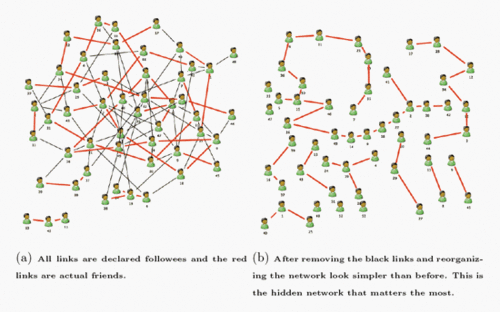Influence research: what are the real influence networks within Twitter and social media?
We continue our Influence research series, paving the way for in-depth insights and breaking new ground on the topic at Future of Influence Summit 2009 in San Francisco and Sydney. See the Future of Influence Summit blog for the full series.
Earlier this year Bernardo Huberman and colleagues at HP’s Social Computing Lab did an analysis of Twitter networks, resulting in the article Social Networks that Matter: Twitter under the microscope.
They studied a random sample of 300,000 Twitter users to gain insights into how they communicated and connected. There were a variety of insights from the research, including the relationship between Twitter activity and number of followers.
Source: Social Networks that Matter: Twitter under the microscope
The final conclusion of the paper was:
Many people, including scholars, advertisers and political activists, see online social networks as an opportunity to study the propagation of ideas, the formation of social bonds and viral marketing, among others. This view should be tempered by our findings that a link between any two people does not necessarily imply an interaction between them. As we showed in the case of Twitter, most of the links declared within Twitter were meaningless from an interaction point of view. Thus the need to find the hidden social network; the one that matters when trying to rely on word of mouth to spread an idea, a belief, or a trend.
This is of course hardly a surprising outcome. Having hundreds or even thousands of Twitter followers does not imply a strong relationship, just as anyone with over a thousand Facebook friends will not necessarily be influenced by all of them.
You need to take a network perspective to understand online influence. Influence is not about point-to-point or hub-and-spoke relationships, but rather about dissemination of messages through a network of relationships.
As I have long pointed out, new communication channels are always additive: they do not necessarily replace existing communication channels, such as face-to-face or telephone. As such our experience is not of changing from one communication channel to another, but of adding channels and as a result constantly striving to rebalance them.
Part of this experience is bringing you existing relationships into new channels – for example you will follow an existing friend on Twitter. However you will often also forge new relationships in social media, based on discovering mutual interests.
Communicating via Twitter with an existing close friend is very different from a Twitter-only relationship. I will see a close friend’s updates on Twitter, but perhaps will communicate with them more frequently on email or the phone.
As such, influence networks need to be understand not in the context of a single communication channel, but what are the relationships across all channels that are based on trust and respect, and thus are conduits for influence.
The “hidden social network” described by Huberman is where influence really disseminates. Many today are getting caught up in the proliferation of connections afforded by social networks and social media. Just a small subset of that are where the true influence networks reside.
We will dig deeper into the hidden social networks and how to tap them at Future of Influence Summit.

